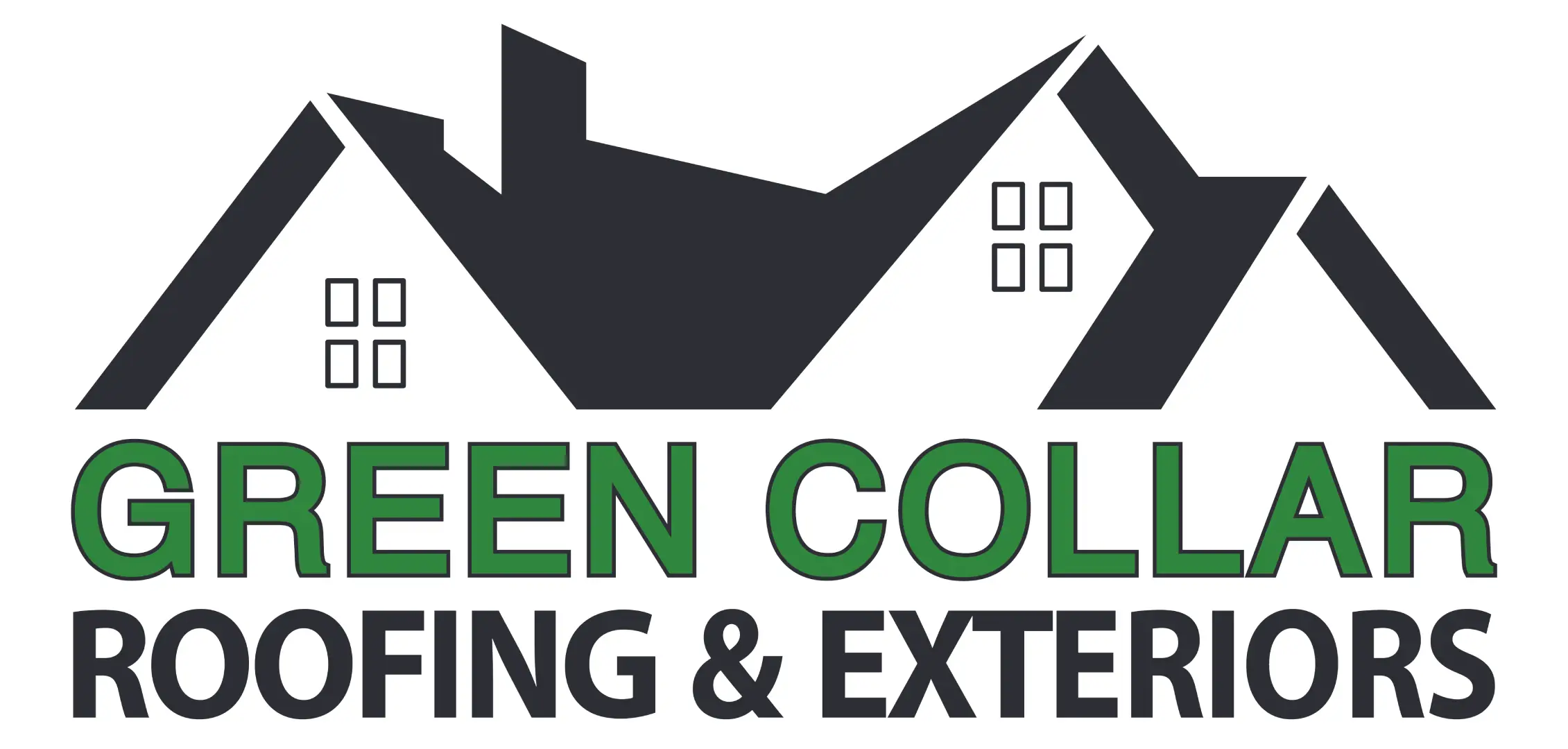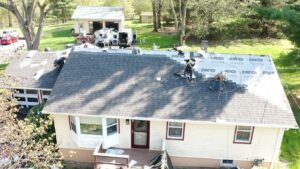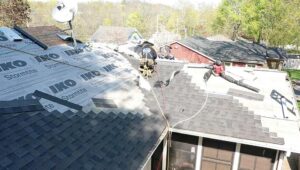In Middletown, NY, storms can bring powerful winds, rain, hail, and other elements that can leave your roof vulnerable to damage. Dealing with storm damage repairs on your roof may feel overwhelming, but taking swift, informed steps can help protect your home and streamline repairs. Here’s a clear guide on what to do when a storm damages your roof, with expert advice from Green Collar Roofing & Exteriors’ service in Middletown for reliable support throughout the process.
Assessing the Roof Damage: First Steps After the Storm
When a storm clears, it’s tempting to check for damage right away. However, your safety should be the priority. Here’s how to safely assess the storm damage on your roof.
Safety Precautions Before Inspecting Your Roof
- Wait for the Storm to Fully Clear: Ensure there’s no ongoing wind, rain, or lightning.
- Check for Hazards: Be cautious of downed power lines, fallen trees, or weakened structures.
- Inspect from the Ground: Use binoculars to survey damage from the ground before considering a closer look.
Common Signs of Roof Damage After a Storm
Look for these telltale signs that indicate your roof may need repairs:
- Missing or Loose Shingles: Shingles may have fallen off or appear dislodged.
- Gutter and Downspout Damage: Dents or dislodged gutters often signal impact damage.
- Shingle Granules: Accumulated granules on the ground or in gutters often indicate roof wear and tear.
- Interior Water Stains: Check for water marks on ceilings and walls, which can indicate roof leaks.
Taking Immediate Action to Prevent Further Damage
Act quickly to protect your roof from further damage. Even temporary fixes can help defend your home until professional help arrives.
Emergency Temporary Repairs You Can Make
If it’s safe, consider these quick fixes to keep your home secure:
- Cover Leaks with Tarps: A durable tarp can prevent water from entering through visible gaps.
- Remove Debris Carefully: If safe, clear any branches or debris to avoid additional damage.
- Use Buckets for Leaks: Place buckets or containers under any interior drips to catch water.
Documenting the Damage for Your Records
Thorough documentation is essential for working with your insurance company:
- Photograph and Record Details: Capture all visible damage, including any interior effects.
- Save All Receipts: Keep receipts for temporary repairs or supplies.
- Create a Detailed List of Damages: This can help during the insurance claims process.
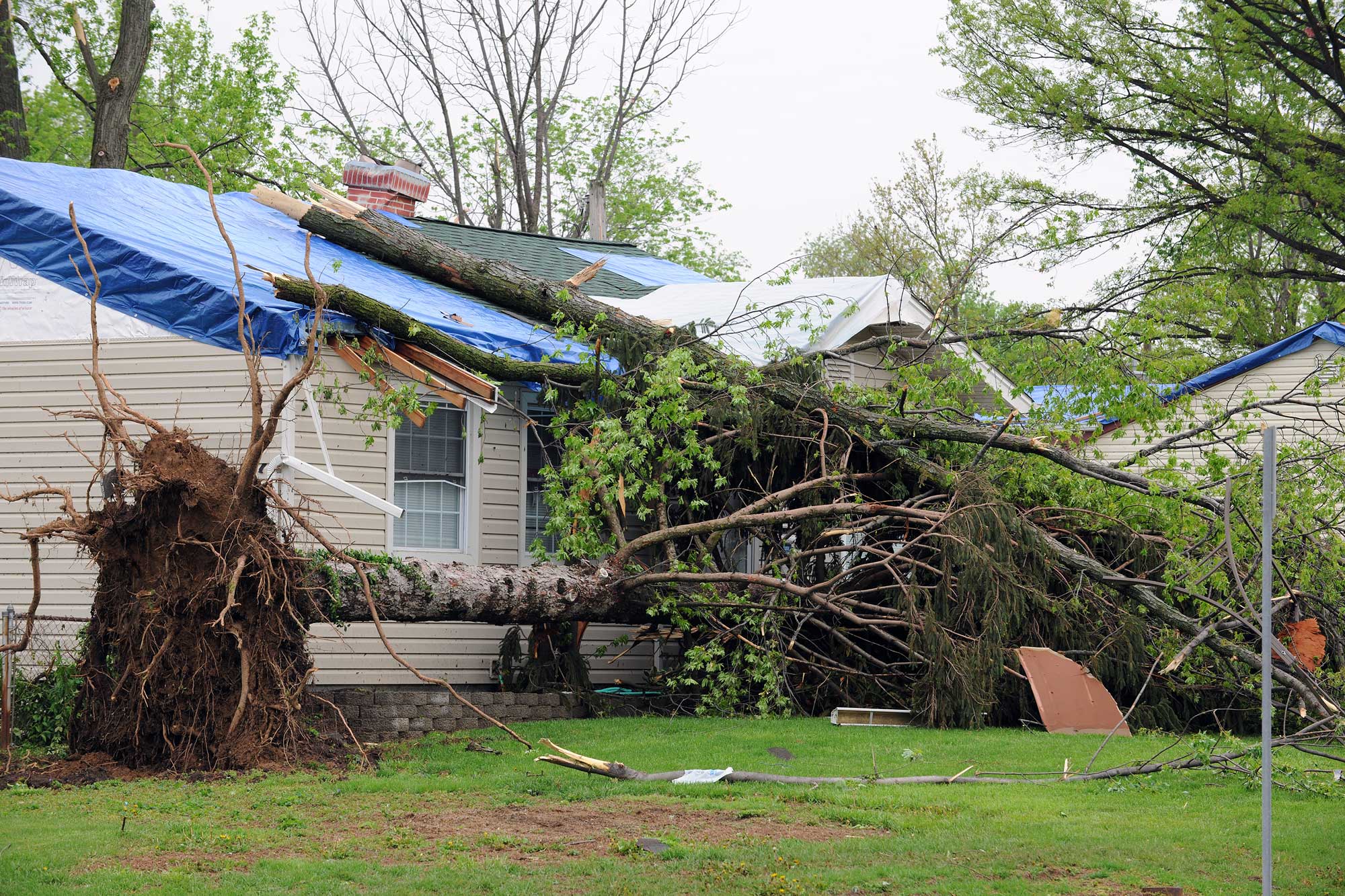
Contacting Your Insurance Company: What to Expect
Once you’ve secured your home, reach out to your insurance company to begin the claims process. Being prepared and proactive can speed up the assessment and repair timeline.
Understanding Your Insurance Policy Coverage
When you call your insurance company:
- Inquire About Specific Coverage: Ask if your policy includes storm damage and what type of repairs are covered.
- Request an Adjuster Visit: Most companies will send an adjuster to assess the damage and document the extent of repairs needed.
- Ask About Temporary Housing Coverage: If damage is severe, find out if your policy covers alternative housing costs.
Tips for Working with Insurance Adjusters
- Be Present During Inspections: Accompany the adjuster during their assessment and point out all areas of concern.
- Request Documentation of Findings: Obtain a copy of their inspection notes for your records.
- Review the Settlement Offer: Don’t rush to accept their initial assessment if you feel it doesn’t cover necessary repairs.
Note: The Federal Emergency Management Agency (FEMA) offers resources on disaster preparedness and insurance coverage to help you understand what is typically included.
Choosing a Trustworthy Roofing Contractor
A reliable roofing contractor is key to ensuring repairs are done properly, using quality materials that will stand up to future storms. Here’s how to choose a contractor wisely.
Essential Qualities in a Roofing Company
Consider the following when selecting a contractor:
- Local Presence and Strong Reputation: Look for a contractor experienced with Middletown’s weather conditions.
- Credentials and Licensing: Verify they are properly licensed and insured.
- Experience with Storm Damage: Contractors familiar with storm repairs are better prepared to manage complex issues.
- Willingness to Work with Insurance: Companies familiar with insurance processes can make the experience easier for you.
Red Flags to Avoid
Watch out for contractors who:
- Pressure You to Sign Immediately: Reputable contractors won’t rush you.
- Offer Low Bids: These may indicate substandard materials or insufficient insurance coverage.
- Lack of Proper Licensing: Unlicensed contractors may leave you liable for uncompleted work or damages.
For additional guidance on hiring reputable contractors, refer to the U.S. Department of Housing and Urban Development (HUD), which provides insights on evaluating contractors for home repairs and renovations.
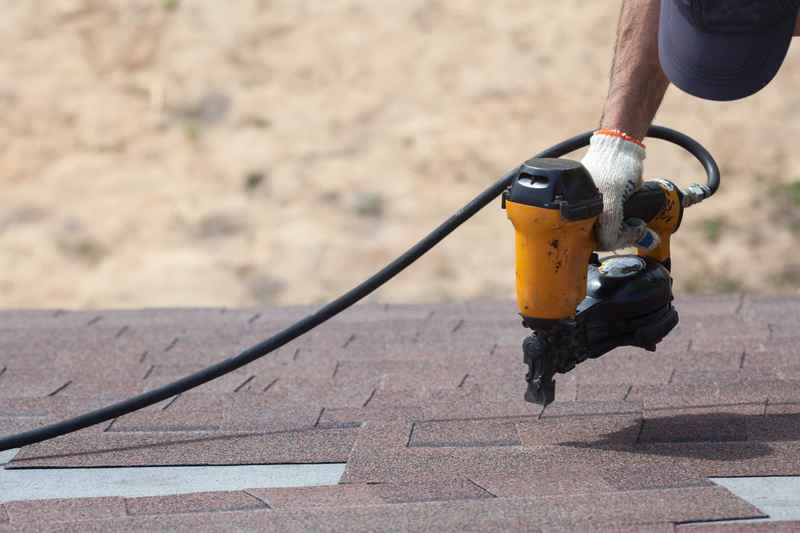
The Roof Repair Process: What to Anticipate
Knowing what to expect during the repair process can help you feel more in control and prepared for potential timelines and expenses.
Typical Repair Timeline for Roofs
While emergency repairs should be immediate, full repairs can take time, depending on several factors:
- Severity of the Damage: Larger repairs often require more work and time.
- Material Availability: Sometimes, specialized materials may take longer to procure.
- Contractor Schedule: Busy seasons can affect timelines, so it’s wise to plan accordingly.
Ensuring Quality Control During Repairs
Stay involved in the repair process to make sure the work meets your expectations:
- Request Regular Updates: Get progress reports from your contractor.
- Ask Questions as Needed: Don’t hesitate to clarify any uncertainties about the repair work.
- Do a Final Walkthrough: Before signing off, check all work to ensure it’s completed to your satisfaction.
Tips for Minimizing Future Storm Damage on Your Roof
While we can’t control Middletown’s weather, proactive steps can help your roof withstand future storms better.
Routine Roof Maintenance
Preventative maintenance is a smart way to extend your roof’s life:
- Annual Inspections: Schedule yearly inspections to catch early signs of wear.
- Clear Gutters Regularly: Remove leaves and debris to avoid water buildup.
- Trim Overhanging Trees: Limiting branches around your roof reduces the risk of impact damage.
Upgrades for Increased Roof Resilience
Consider upgrading with features that offer better storm resistance:
- Impact-Resistant Shingles: Designed to withstand hail and debris.
- Reinforced Roof Decking: Added support makes your roof more resilient.
- Improved Ventilation: Enhances airflow and prevents moisture buildup.
Green Collar Roofing & Exteriors: Here to Help When a Storm Damages Your Roof
When you’re dealing with storm damage on your roof, Green Collar Roofing & Exteriors in Middletown has the expertise to make the repair process as smooth as possible. We specialize in all aspects of storm repair, from emergency services to full roof replacements, and can assist you with insurance claims to simplify the experience.
Why Choose Green Collar Roofing & Exteriors?
Our team stands out in Middletown for:
- Local Knowledge and Expertise: We understand the unique challenges that Middletown weather presents.
- Certified and Insured Professionals: We bring peace of mind by ensuring all our work meets the highest standards.
- Transparent Pricing and Clear Communication: You’ll always know what to expect with no surprises.
- Quality-Guaranteed Materials and Workmanship: We use durable materials to withstand future storms.
For dependable storm damage repair, look no further. Take charge of your home’s safety—get a free estimate now and let Green Collar Roofing & Exteriors help restore your peace of mind.
